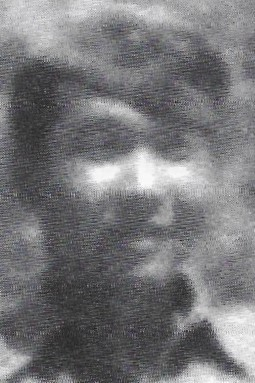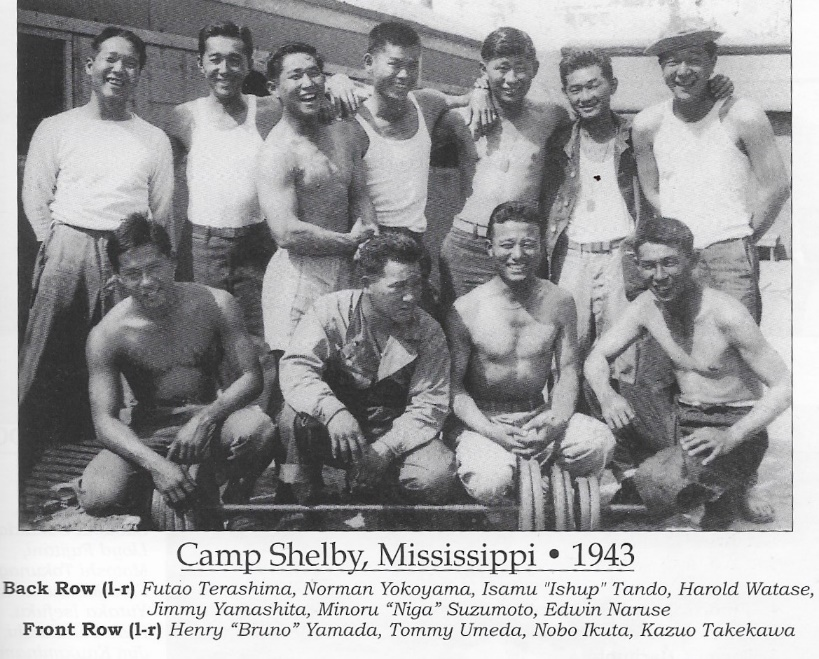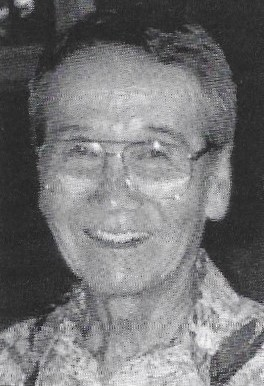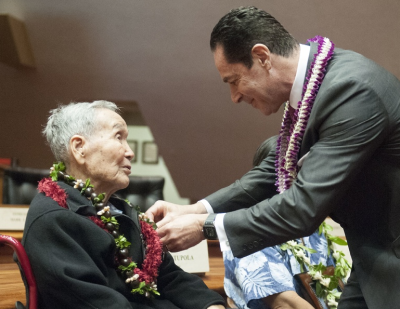
Futao Terashima
Private First Class
442nd Regimental Combat Team
3rd Battalion, I Company
Futao Terashima was born on January 17, 1922, in Kawailoa, Oahu, Territory of Hawaii. He was one of seven children born to Genji and Hine (Sakata) Terashima. His brothers were Yoshio, Takashi, and George; his sisters were Betty Chiiko, Amy Eiko, and Ruiko. Genji emigrated in 1907 from Fukushima Prefecture, Japan. Hine emigrated in 1913 from Fukushima Prefecture. They were married on November 14, 1914, in Honolulu.
Genji worked for the Waialua Agricultural Company as a carpenter. The family lived in Mill Camp 6, House 36, Waialua.
Futao attended Kawailoa Elementary School, and he graduated from Waialua High School in 1939. After graduation, he was employed by the Army Quartermaster at Schofield Barracks delivering laundry to the officers and soldiers. He was also working for the Waialua Agricultural Company.
He registered for the draft on June 30, 1942, at Local Board No. 11, Waialua Fire Station. His point of contact was his supervisor at the laundry, Chester Kainuma. He was 5’3” tall and weighed 135 pounds.
Futao enlisted in the U.S. Army on March 23, 1943. His enlistment stated that his civilian occupation was “Semi-skilled routeman.” He was sent to Boom Town, the “tent city” at Schofield Barracks where all the recent volunteers were housed. On March 28, they were given an aloha farewell ceremony by the community at Iolani Palace. On April 4, they left on the S.S. Lurline for San Francisco. After arriving on the mainland, Futao and the rest of the new soldiers were sent by train to Camp Shelby, Mississippi, for training, arriving on April 18. He was assigned to 3rd Battalion, I Company, 4th (Heavy Weapons) Platoon, of the 442nd Regimental Combat Team.

Above: Camp Shelby, 1943-45; 4th Platoon men; Futao is far left, back row
After a year of basic and specialized training and military exercises, they left by train for Camp Patrick Henry, Virginia, on April 22, 1944. On May 2, the 442nd sailed from nearby Hampton Roads in a convoy of over 100 ships, and arrived at Naples, Italy, on May 28.
The battalion spent a week at a staging area in Bagnoli, near Naples, before leaving on LSTs for Anzio on June 6, where they marched five miles to a bivouac area. From Anzio, the 442nd went to a large bivouac area near Civitavecchia, north of Rome, where they went through additional training and final preparations for going to the front lines. The 442nd entered combat on June 26 near Suvereto in the Rome-Arno Campaign.
Futao, nicknamed “Gunner” by his comrades, fought in all battles of the 442nd in Italy. They left for France on September 27, 1944. Once they arrived in Marseilles, the Combat Team was in a bivouac area in nearby Septèmes until October 9, when they were transported north to participate in the Rhineland-Vosges Campaign. In October-November, the 442nd liberated the important road junction of Bruyères, followed by Biffontaine and the famous “Rescue of the Lost Battalion” – the 1st Battalion of the 141st (Texas) Infantry Regiment that had advanced beyond its support, become surrounded by the enemy, and was unable to extricate itself.
During the assault on the German forces to rescue the Lost Battalion, Pfc. Terashima was wounded by shrapnel from an artillery tree burst. He was evacuated to England for treatment. When released from the hospital, he returned to his unit, which was now back in Italy for the Po Valley Campaign in the spring of 1945.
The Combat Team’s presence in Italy was a closely-kept secret as their mission was to execute a diversionary attack on the western anchor of the German’s Gothic Line, an elaborate system of fortifications hewn out of solid rock and reinforced with concrete. The enemy’s positions were built for all-around protection and observation.
On March 28, the Combat Team left their Pisa staging area and moved to a bivouac at San Martino, near the walled city of Lucca. The move was made in absolute secrecy and under cover of darkness. While in bivouac, they went through more training – with the new replacements who had seen little or no combat practicing small-unit problems with their squads and platoons far into the night.
On April 3 at 7:45 p.m., the 3rd Battalion moved under cover of darkness to a forward assembly area in the small town of Azzano on Mount Cavallo. This climb required five hours under full equipment, and a misstep meant a fall of between 15 to 150 feet down the mountainside.
On April 4, Pfc. Terashima’s 3rd Battalion remained hidden in houses and olive groves. That night I and L Companies, and the machine-gun platoon of M Company, began the climb up Mount Folgorito at 10:00 p.m. They arrived about 5:30 a.m.; and by 7:30 a.m. the ridgeline was secure. Fortified Nazi gun positions were taken almost without a struggle due to the complete surprise the Combat Team had accomplished.
From this initial success, the regiment aggressively continued to attack and push the enemy back On April 10, the 3nd Battalion crossed the Frigido River and drove 3,000 yards north to occupy the high ground before the center of the town of Carrara. The Germans began shelling the city and surrounding area controlled by the 442nd, keeping the area under heavy artillery fire for several days.
During this action, Pfc. Futao Terashima was wounded again by an artillery burst. He was treated and returned to the line.
On April 20, the Combat Team was in the vicinity of Fosdinovo and Mount Nebbione, which the Germans were fiercely defending. Third Battalion was probing the enemy defenses on Mount Nebbione from every possible angle, but were consistently beaten back. The men were weary after climbing up and down 3,000-foot peaks for two weeks without much rest. It was during this time that Futao was wounded for the third time.
This campaign to secure the west end of the Gothic Line had initially been intended as a diversion for the Allies, as the main attack to break the German’s line was farther east on the Italian Peninsula. Thanks in large part to the actions of the 442nd, the diversion had ended up being a full-scale breakthrough, with the 442nd liberating the west coast of Italy before the war ended. For its part in this major victory, the 442nd was later awarded the Distinguished Unit Citation for the 10 days of bitter action from April 5 to 14.
On May 2, the war ended in Italy. In the following days, Terashima found himself guarding German prisoners as part of the 442nd’s occupation duties.
Futao’s return to Hawaii was a long journey. First, by B-17 bomber from Italy to Dakar, North Africa, to Brazil, to Miami, Florida. From Miami, he traveled by train to Camp Beale, California. He boarded the USAT Evangeline in Oakland,and finally on December 19, 1945, he was among the 567 war veterans on the ship when it docked at Pier 24 at Honolulu. After they disembarked, friends and family were allowed to visit for one hour on the dock. Then the soldiers were sent on Army trucks to the Oahu Personnel Center at Fort Kamehameha for processing prior to their discharge on January 5, 1946.
For his military service, Private First Class Futao Terashima was awarded the Bronze Star Medal with one bronze oak leaf cluster, Purple Heart Medal with two bronze oak leaf clusters, Good Conduct Medal, American Campaign Medal, European-African-Middle Eastern Campaign Medal with three bronze stars, World War II Victory Medal, Army of Occupation Medal, Distinguished Unit Badge, and Combat Infantryman Badge. He was awarded the Congressional Gold Medal on October 5, 2010, along with the other veterans of the 100th/442nd Regimental Combat Team. This is the highest Congressional Civilian Medal.

Futao married Betty Tomie Kumasaka, daughter of Kanehichi and Semu Kumasaka of Waialua, Oahu. When their first child was born in March 1950, they were living at Fresh Air Camp, Waialua. Over the years they raised a family of one son and two daughters. He was active in the 442nd Veterans Club, serving Rural Chapter (Waialua) Vice President in 1957 and President in 1958. In 1957, the Terashimas built a house at 401 Iliwai Drive in Wahiawa. He worked as a federal civil service employee at U.S. Army Headquarters Pacific at Fort Shafter until his retirement.
Terashima in later years
On September 21, 2017, Futao was awarded the French Legion of Honor by the government of France. The award ceremony was held at the Hawaii State Capitol.
Below: Presentation of French Legion of Honor to Futao Terashima by Honorary Consul Guillaume Maman

Futao Terashima died on January 24, 2020, in Honolulu. He was buried with his wife, who predeceased him on November 15, 2016, in Mililani Memorial Park, Oahu, Section D. He was survived by his three children and two grandchildren,
His brother, Yoshio Terashima, served as a Technician 5th Grade in the 442nd Regimental Combat Team, Cannon Company.
Researched and written by the Sons & Daughters of the Regimental Combat Team in 2022.
